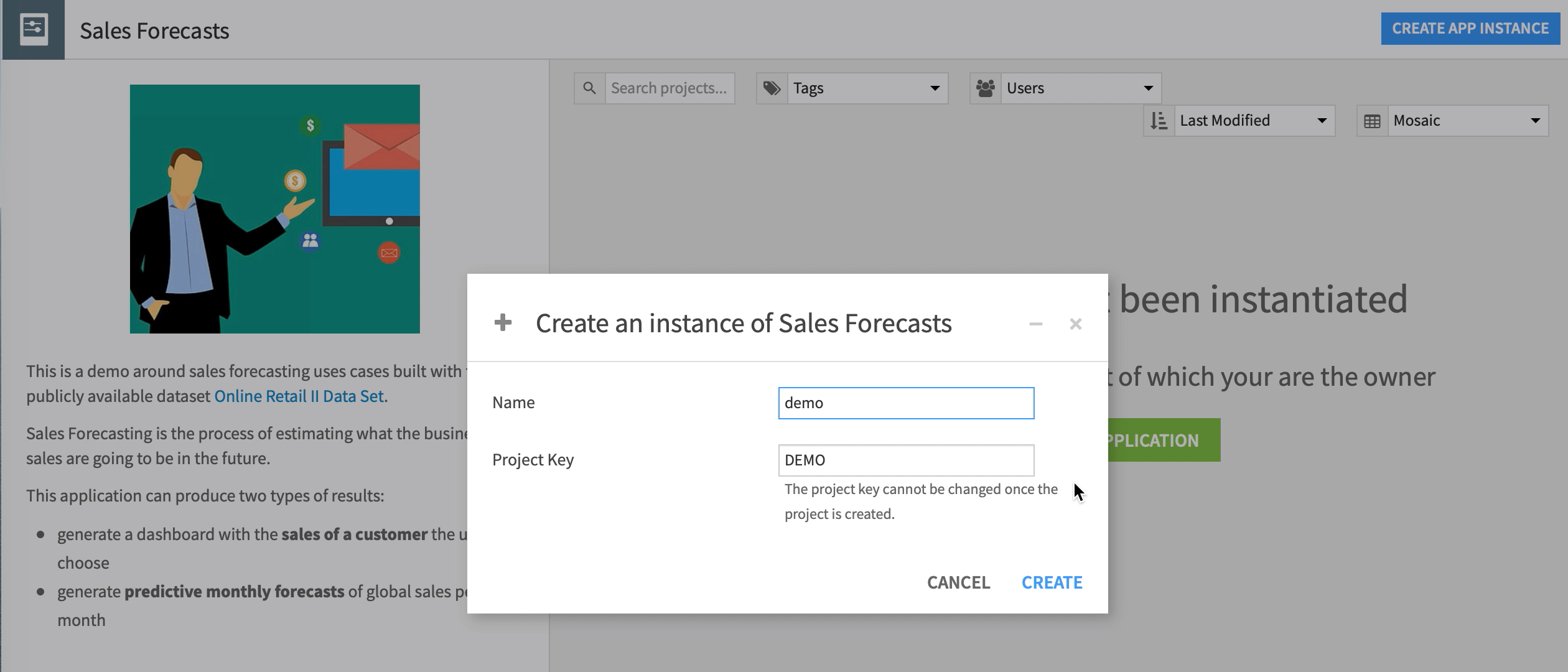Concept | Dataiku apps#
Dataiku apps allow you to package and reuse projects for collaboration. Additionally, they let you apply an existing project’s workflow to new data without needing to understand the details of the project.
Creating a Dataiku app#
A typical process for creating and using a Dataiku app is:
A data scientist creates a Dataiku project.
They realize the workflows in the project could be useful to colleagues.
The data scientist (or app developer) converts their project into a Dataiku app.
Each colleague using the app creates their own instance of the Dataiku app.
Accessing apps#
Users can find Dataiku apps on the homepage in a dedicated panel or access them from the waffle () menu of the Design node’s top navigation bar.
To manage access, the Application Designer can configure the execute permissions for the app.
Visual apps and apps-as-recipes#
You can surface Dataiku apps in two different ways:
Form |
Description |
|---|---|
Visual apps |
Package a project with a GUI on top, which empowers more people within an organization to leverage AI and self-service analytics. |
Apps-as-recipes |
Package part of a Flow into a recipe usable in the Flows of other projects. You can execute these recipes externally via the public REST API. |
Tip
Watch the featurette below to learn more about visual apps.
Visual apps

Use case for a Dataiku app#
Let’s say a data-driven marketing team relies on a single data scientist to build dashboards for monitoring performance by region and quarter. The data scientist receives multiple requests each day for up-to-date data using different input parameters.
Instead of manually resolving each request, the data scientist can package a project into an easy-to-use Dataiku app. Then, the members of the marketing team can choose the parameters they want and retrieve insights for their business needs.
Because each app is its own instance, multiple users can run instances of the same Dataiku app at the same time using different data or parameters.
Dataiku apps vs. webapps#
Their names and use cases might be similar, but Dataiku apps and webapps are different and have different purposes in Dataiku.
Webapps#
Webapps are great for developers who want to create custom or interactive visualizations. You can write a webapp in many different programming languages:
Standard (written in HTML/CSS/JS, and optionally with a Python backend)
R (using the Shiny library)
Python (such as the Bokeh or Dash libraries)

Developers create webapps within a Dataiku project. Any user with the correct permissions can access the webapp. Developers can also share their webapps with non-Dataiku users.
Dataiku doesn’t automatically allow concurrent usage of a webapp. However, developers can implement code to allow more than one user to access the same webapp at the same time.
Dataiku apps#
Dataiku apps are ideally suited for business teams who need to create and share business applications with many users across an organization.

For example, this sales forecasting app started out as a project. The designer of the project packaged it to allow users to build their own sales history dashboards by entering information into a custom field. Therefore, users of this Dataiku app can complete specific tasks without having to run the recipes in the project itself.
Coding skills aren’t required to build Dataiku apps.
Next steps#
To better understand Dataiku apps, make sure you are confident creating automation scenarios.
To try build a Dataiku app yourself, see Tutorial | Dataiku apps.

